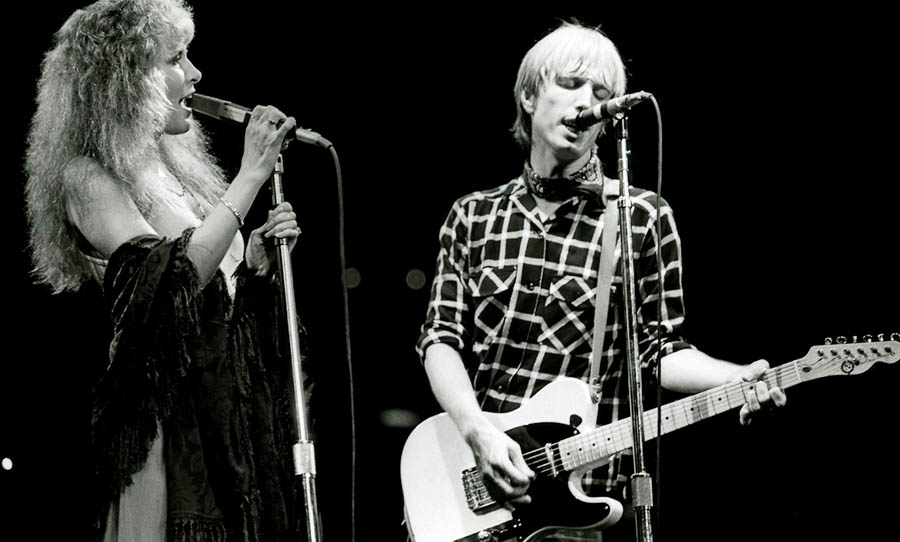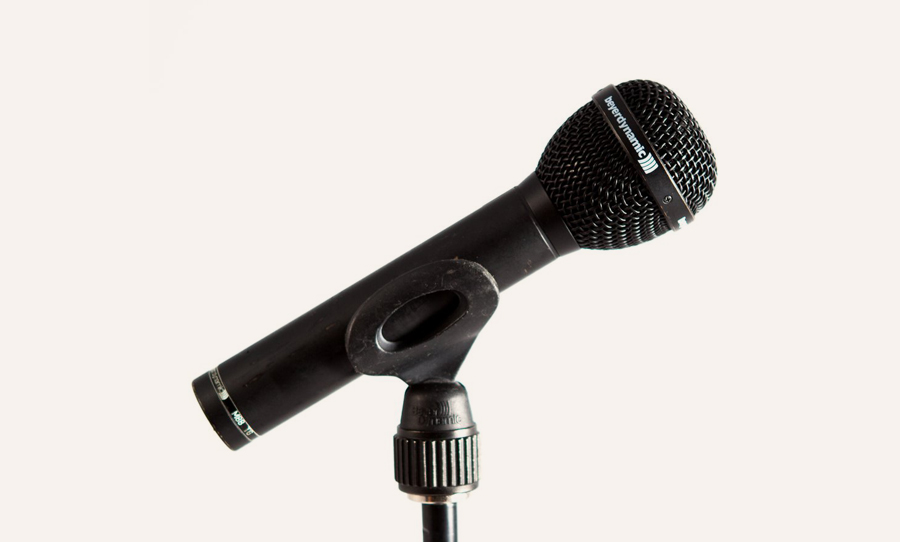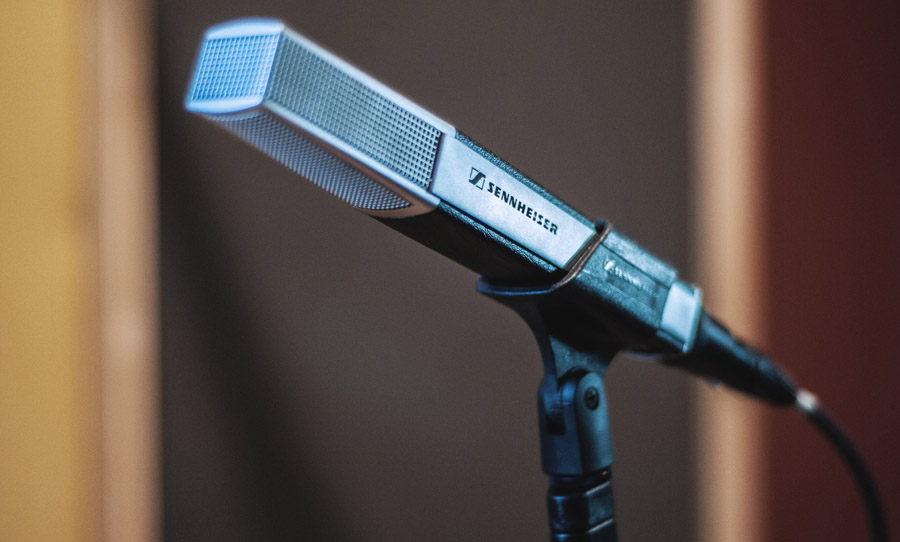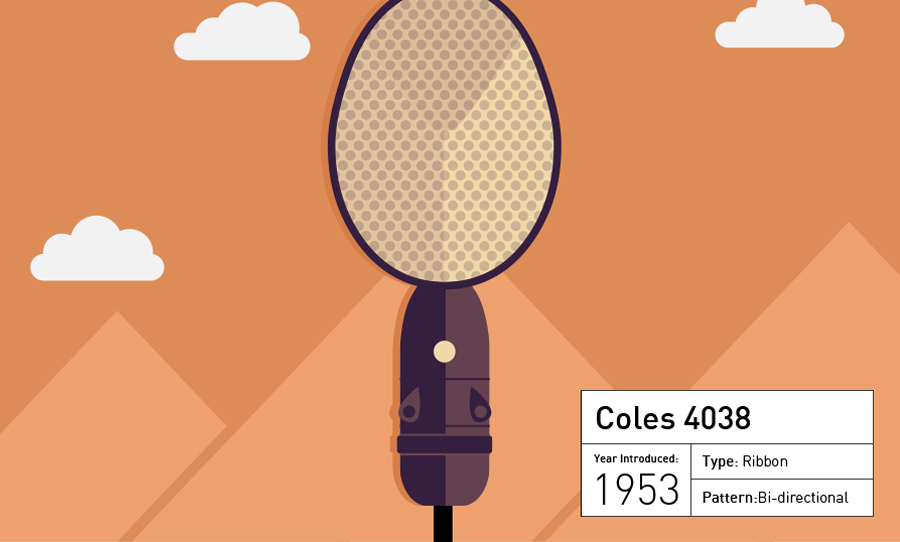Looking for something a bit different when recording vocals? Check out this selection of 4 reliable, yet classy dynamic microphones for your next session.
When we track vocals, we sometimes reach for the large diaphragm condenser without even thinking about it. They offer more in the way of top end detail – crucial for vocal intelligibility. Depending on the quality, you can expect a general flatness of frequency response in the bottom end too. Dynamic microphones may not even come into consideration.
But what if you don’t happen to have such an option at hand? Or, you needed something that could take a little more heat? That’s where dynamic microphones come in handy. Some dynamics aren’t too flattering on vocals, but others can provide a blend of reliability, consistency, ability to take punishment and can offer a surprising amount of quality.

Shure SM7B
The Shure SM7B isn’t just one of the best dynamic vocal options, it’s one of the best vocal mics, full stop. This chunky black cylinder has racked up some serious studio-cred over the decades, being the go-to for Michael Jackson and according to Sound On Sound, it’s a favourite of Lana Del Rey’s.
It’s a favourite of the broadcast industry, owing to its reliability, bass rolloff and presence switching abilities and its preternatural ability to reject off axis sounds. If you’re recording vocals alongside acoustic guitar for example, this is the mic for you.
Though it’s by no means perfect – it needs a lot of gain and is therefore susceptible to an increase in noise floor – if you’re looking for a mic that can handle a lot of SPL without breaking a sweat, and still capture a good degree of vocal nuance, it’s a great choice.

Electro-Voice RE20
Like the SM7B, the Electro-Voice RE20 has clocked up many a mile in the studio, both in recording and broadcasting due to its refined sound and ability to survive a nuclear blast. It’s been immortalised by the likes of Stevie Wonder and Radiohead’s Thom Yorke.
Chief among the big grey beast’s virtues is it’s proximity effect control, using what Electro-Voice call Variable-D technology. An inherent side effect of cardioid pattern microphones is the proximity effect – sound source gets close to the microphone and the sound gets bassier – not exactly ideal in all vocal situations.
Variable-D works by utilising ports that are at varied distances from the diaphragm – the higher frequencies entering the ports closest to the diaphragm, the lower frequencies further away. Hence, the microphone can be positioned close to bass heavy sound sources without overloading the bottom-end.

Beyer Dynamic M 88 TG
The previous models from Shure and Electro-Voice are quite conventional choices for vocals in a studio setting. The Beyer Dynamic M 88 TG is a slightly left-of-centre choice though. It was a classic handheld reporter mic, but it’s not necessarily a strong performer in that application. Indeed, you’re more likely to find it inside a kick drum rather than in front of someone’s mouth.
It does have some beguiling qualities however that make it a worthwhile experiment for vocals. It’s frequency response has flattering bump in the bottom end and if your vocalist has a fair degree of control, they’ll be able to enjoy the extra warmth that this mic offers.
It’s also a hyper cardioid microphone, meaning that it will reject external sounds quite well, much like the SM7B. It doesn’t have the pop shield that’s built into the RE20 or the SM7B though, so if you were to give it a go, it might be best to use an external pop filter.

Sennheiser MD 441
The MD 441 is the Concorde jet of the dynamic mic family – long, sleek and expensive. Some have said that it’s the finest dynamic microphone ever produced – the fact that it’s still in production after first leaving the Sennheiser factory floor in 1966 is testament to this claim.
Like the other microphones that make up this enviable quartet, it has excellent of axis rejection capability. This, combined with its rock-solid build quality make an easy choice for live applications and is a natural fit for many sound sources, including snare drum and horn section.
The microphone’s tonal character is also quite easy for user to adjust to taste. There’s a five-position bass rolloff switch and a two position brilliance switch making it useful on just about any source. With it condenser-like ability to capture transients, it’s been a vocal favourite for the likes of Fleetwood Mac, David Bowie, Air and Tame Impala.

There’s no one-size-fits-all solution in recording and this applies ten-fold to vocals. Each and every person has a different approach to the microphone and it’s the job of the engineer to facilitate the best pairing of vocalist and signal path. So instead of reaching for the trusty large-diaphragm condenser every time, thinking outside the box might just lead to an outstanding result.

